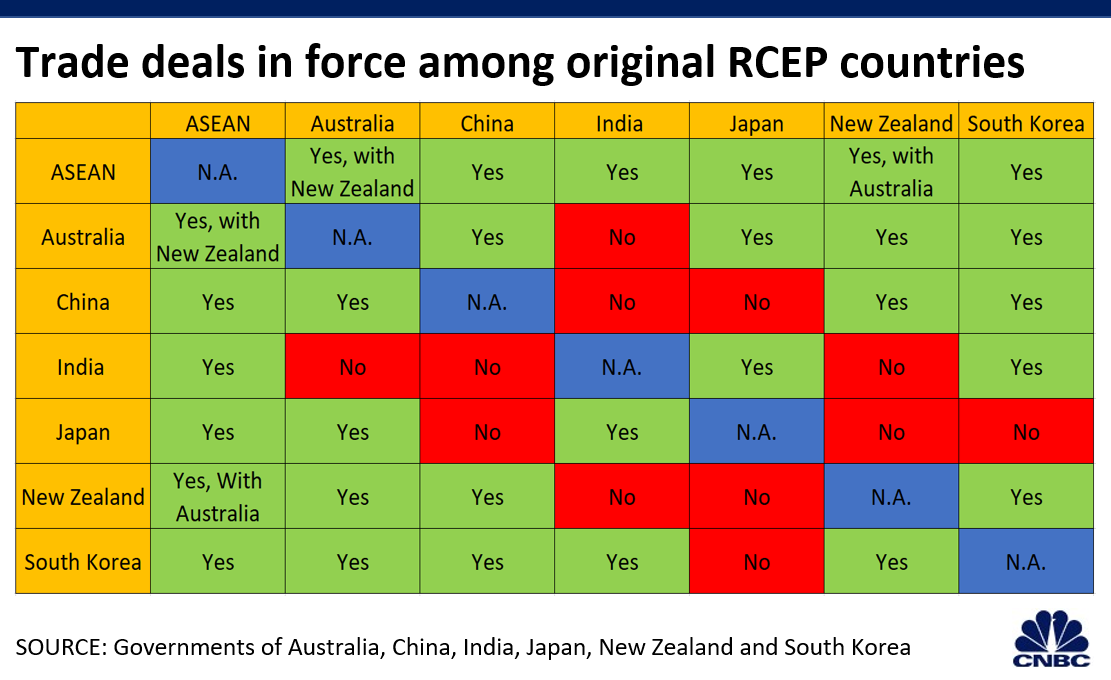

The deal, called Regional Comprehensive Economic Partnership or RCEP was launched in November 2012 in Phnom Penh, Cambodia as an initiative by ASEAN to encourage trade among its member states and six other countries.

Those six other countries — Australia, China, India, Japan, New Zealand and South Korea — already have standalone free trade agreements with ASEAN. Coming together under RCEP would boost commerce across the group by lowering tariffs, standardizing customs rules and procedures, and widening market access especially among countries that don’t have existing trade deals.
The U.S.-China trade war has hurt many Asian exporters by reducing demand for their goods and slowing down growth. The urgency to conclude RCEP increased after all that.
“RCEP was hard fought, but a choice made easier by the calculation that Asia needed to push back against protectionism even as the United States chose that path,” academics from the Australian National University wrote in a report.
What will RCEP do?
The final text with details of the trade agreement will go through legal reviews before being signed and released.
Media and analyst reports have said RCEP is primarily beneficial for goods trade because it will progressively reduce tariffs on many products. In addition, the deal will allow businesses to sell the same goods within the bloc but do away with the need to fill out separate paperwork for each export destination, Reuters reported.
Deborah Elms, executive director at consultancy Asian Trade Centre, told Reuters that would help Asian producers to sell more of their products to the rest of the region.
Even for companies that export goods outside the bloc, there’ll be incentives to build their supply chains across RCEP member countries, according to Reuters.
India’s role
India, involved in RCEP negotiations from the start, declined to join the trade pact over concerns that the deal would hurt its domestic producers. India’s apprehension toward the deal had been one of the main hurdles in recent RCEP talks.
India is Asia’s third-largest economy and a large consumer market.
But the remaining 15 countries are still expected to bring RCEP into force, according to another consultancy, The Economist Intelligence Unit.
“Without India, RCEP will be less significant, but its path to implementation has become much smoother,” the EIU said in a report.
Japan seeks to keep India in China-backed regional trade pact
“It is meaningful from the economic, political and potentially the national security point of view,” Makihara said of the inclusion of the world’s largest democracy in the pact. “Japan will continue to try to persuade India to join.”
Trade Minister Hiroshi Kajiyama will accompany Abe on next month’s trip to India, Makihara said.
Resources:
https://thediplomat.com/2019/11/rceps-economic-impact-in-asia/